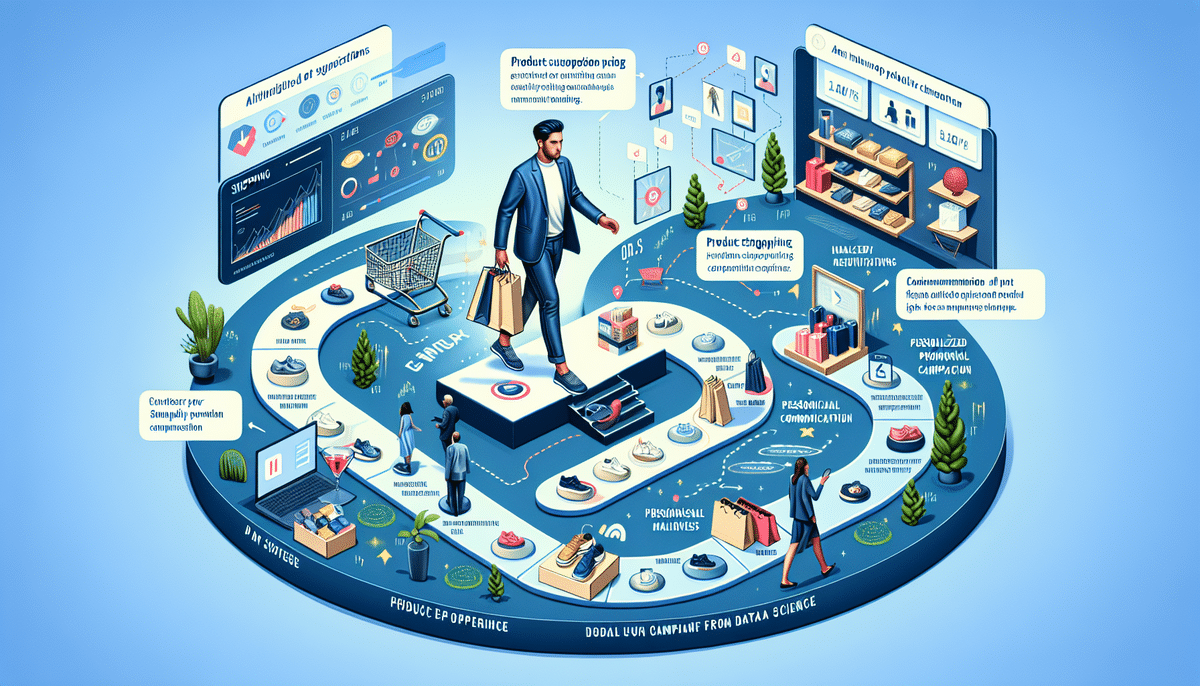The Importance of Personalization and Customization in E-Commerce
In today's competitive e-commerce landscape, personalization and customization are essential for business success. Customers expect tailored experiences that cater to their unique preferences and needs. According to a Salesforce study, 76% of consumers expect companies to understand their needs and expectations. By personalizing the shopping experience, businesses can enhance customer satisfaction, increase conversion rates, and boost sales.
Enhancing Customer Satisfaction
Personalized experiences make customers feel valued, leading to higher satisfaction levels. When a website recognizes and caters to individual preferences, it fosters a sense of loyalty and trust.
Increasing Conversion Rates
Tailored recommendations and targeted marketing campaigns significantly improve conversion rates. Customers are more likely to purchase products that align with their interests and past behaviors.
Boosting Sales
Customized experiences not only attract new customers but also encourage repeat purchases. Loyal customers contribute to sustained revenue growth and positive word-of-mouth referrals.
Challenges in Implementing Personalization Strategies
While personalization offers numerous benefits, implementing effective strategies presents several challenges:
Data Management
The vast amount of data required for personalization can be overwhelming. Businesses must develop sophisticated analytics systems to process and interpret customer behavior and preferences.
Data Privacy Concerns
Balancing personalization with privacy is crucial. Customers are increasingly aware of data collection practices and demand transparency. Ensuring compliance with data protection regulations, such as GDPR and CCPA, is essential to maintain trust.
Technical Expertise and Investment
Integrating personalization requires technical expertise and significant investment in technology and infrastructure. Small businesses may find it challenging to allocate resources for these initiatives.
Strategies to Overcome Personalization Challenges
To effectively implement personalization, businesses can adopt the following strategies:
Invest in Advanced Data Analytics
Utilizing advanced data analytics tools helps organizations gain deeper insights into customer behavior. Platforms like Google Analytics and Tableau enable businesses to track and analyze customer interactions.
Ensure Data Transparency and Compliance
Being transparent about data collection and usage builds customer trust. Implementing robust data protection measures and complying with relevant regulations are paramount.
Enhance Technical Infrastructure
Investing in scalable and flexible technology solutions allows businesses to integrate personalization seamlessly. Utilizing cloud-based platforms can reduce costs and improve scalability.
Tools and Technologies for E-Commerce Personalization
Several tools and technologies can facilitate effective personalization in e-commerce:
Customer Relationship Management (CRM) Software
CRM platforms like Salesforce CRM help businesses track, store, and manage customer data, enabling personalized marketing and outreach.
Data Analytics and Machine Learning
Tools such as IBM Watson and Microsoft Azure Machine Learning analyze data to identify trends and predict customer behavior.
Personalization Engines
Platforms like Optimizely and Dynamic Yield use machine learning algorithms to deliver real-time personalized recommendations and promotions.
Dynamic Content Delivery (DCD)
DCD technologies enable businesses to customize website content and layouts based on individual customer preferences. Tools like Contentful facilitate dynamic content delivery.
Best Practices for Developing Personalized E-Commerce Strategies
Establishing effective personalization requires adherence to several best practices:
Proactive and Transparent Data Collection
Encouraging customers to share their preferences through clear communication about data usage enhances data quality and trust.
A/B Testing
Conducting A/B tests on different website elements and personalization offers helps determine what resonates best with users. Tools like Optimizely and VWO facilitate effective A/B testing.
Targeted Product Recommendations
Offering personalized product suggestions based on purchase history and browsing behavior increases the likelihood of purchases. Implementing features like “Customers Also Bought” can enhance the shopping experience.
Consistent Multi-Channel Experience
Ensuring a seamless and consistent experience across all customer touchpoints, including mobile, desktop, and social media, reinforces brand loyalty and customer satisfaction.
Impact of Personalization on Customer Loyalty and Business Growth
Personalization significantly influences customer loyalty and repeat business. According to a 2023 Accenture study, 91% of consumers are more likely to shop with brands that recognize, remember, and provide relevant offers.
Enhancing Customer Loyalty
Personalized experiences make customers feel understood and valued, fostering long-term loyalty and reducing churn rates.
Driving Repeat Purchases
Customers are more likely to return to businesses that offer tailored experiences, leading to increased lifetime customer value.
Boosting Revenue and Profitability
Higher conversion rates and increased customer retention contribute to sustained revenue growth and improved profitability.
Case Studies: Successful E-Commerce Personalization Strategies
Several leading companies have successfully implemented personalization strategies in e-commerce:
Amazon
Amazon leverages extensive customer data to provide personalized product recommendations, enhancing the shopping experience and driving sales. Their recommendation engine accounts for 35% of the company's sales.
Spotify
Spotify uses user listening data to curate personalized playlists and content, such as the “Discover Weekly” playlist, which has significantly increased user engagement and retention.
Birchbox
Birchbox personalizes its beauty and grooming product recommendations based on customer preferences, resulting in higher subscription retention rates and customer satisfaction.
Future Trends and Case Studies in E-Commerce Personalization
The future of personalization in e-commerce is shaped by emerging technologies and evolving consumer expectations:
Advanced AI and Machine Learning
Continued advancements in AI and machine learning will enable even more precise and predictive personalization, anticipating customer needs before they arise.
Integration of Augmented Reality (AR)
AR technologies will offer immersive personalized shopping experiences, allowing customers to visualize products in their environment before purchasing.
Expanding Personalization Channels
New channels, such as voice assistants and IoT devices, will provide additional avenues for delivering personalized experiences.
Case Study: Netflix
Netflix utilizes sophisticated algorithms to personalize content recommendations, contributing to its high user retention rates and global success.
Common Mistakes to Avoid in Personalized E-Commerce Strategies
To ensure successful personalization, businesses should avoid the following common mistakes:
Ignoring Data Privacy
Failing to prioritize data privacy can lead to customer mistrust and legal repercussions. Always communicate data practices transparently.
Overcomplicating the User Experience
While personalization enhances the experience, excessive customization can overwhelm customers. Strive for balance to maintain a seamless shopping journey.
Neglecting Mobile Optimization
With the increasing use of mobile devices for shopping, ensuring that personalized experiences are optimized for mobile is crucial.
Measuring Success: Key Metrics for Evaluating Personalization Efforts
Tracking the effectiveness of personalization strategies involves monitoring several key metrics:
Conversion Rate
Measures the percentage of visitors who complete a desired action, such as making a purchase. An increase indicates successful personalization.
Customer Lifetime Value (CLV)
Represents the total revenue a business can expect from a single customer account. Higher CLV signifies effective personalization in fostering loyalty.
Engagement Metrics
Includes metrics like click-through rates, time spent on site, and interaction with personalized content. These metrics reflect customer interest and satisfaction.
Bounce Rate
The percentage of visitors who leave the site after viewing only one page. A lower bounce rate can indicate that personalized content is effectively engaging customers.
Cart Abandonment Rate
Tracks the percentage of shoppers who add items to their cart but do not complete the purchase. Personalization strategies can help reduce this rate by providing relevant incentives and reminders.
Conclusion
Personalization and customization are pivotal for e-commerce success, enabling businesses to create meaningful and engaging customer experiences. Despite the challenges of data management, privacy concerns, and technical investments, the benefits of enhanced customer satisfaction, increased loyalty, and higher sales make personalization a valuable strategy. By adopting best practices, leveraging advanced tools and technologies, and staying attuned to future trends, e-commerce businesses can effectively implement personalization strategies that meet and exceed customer expectations.






















